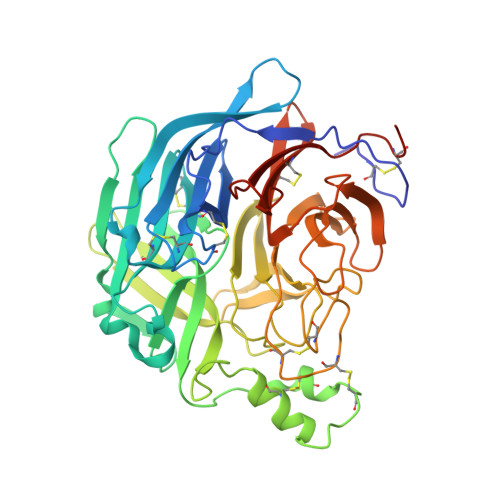A key region of molecular specificity orchestrates unique ephrin-B1 utilization by Cedar virus.
Pryce, R., Azarm, K., Rissanen, I., Harlos, K., Bowden, T.A., Lee, B.(2020) Life Sci Alliance 3
- PubMed: 31862858
- DOI: https://doi.org/10.26508/lsa.201900578
- Primary Citation of Related Structures:
6THB, 6THG - PubMed Abstract:
The emergent zoonotic henipaviruses, Hendra, and Nipah are responsible for frequent and fatal disease outbreaks in domestic animals and humans. Specificity of henipavirus attachment glycoproteins (G) for highly species-conserved ephrin ligands underpins their broad host range and is associated with systemic and neurological disease pathologies. Here, we demonstrate that Cedar virus (CedV)-a related henipavirus that is ostensibly nonpathogenic-possesses an idiosyncratic entry receptor repertoire that includes the common henipaviral receptor, ephrin-B2, but, distinct from pathogenic henipaviruses, does not include ephrin-B3. Uniquely among known henipaviruses, CedV can use ephrin-B1 for cellular entry. Structural analyses of CedV-G reveal a key region of molecular specificity that directs ephrin-B1 utilization, while preserving a universal mode of ephrin-B2 recognition. The structural and functional insights presented uncover diversity within the known henipavirus receptor repertoire and suggest that only modest structural changes may be required to modulate receptor specificities within this group of lethal human pathogens.
- Division of Structural Biology, Wellcome Centre for Human Genetics, University of Oxford, Roosevelt Drive, Oxford, UK.
Organizational Affiliation:

















